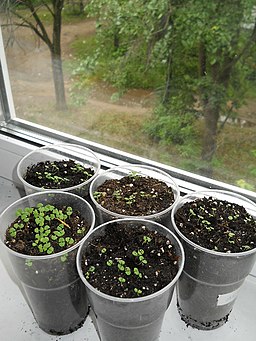Wintertime is all about curling up with a book. Wait, all seasons are meant for books! But let’s put a marker between the pages for a moment to save our spot, and let’s think about impatiens and petunias, tomatoes and zucchinis. In some parts of the country it may be hard to believe, but today is the first day of spring! Here in Colorado, we’ve already experienced some record breaking heat, but that doesn’t mean we won’t get a foot of snow in the next few days. Still, no matter what’s going on outside at this moment, it’s time to start thinking about your garden and planting some seeds. Actually, I have a better idea. We can focus our attention on both: reading and gardening!
Gardens are the subject of so many great children’s books. The first that comes to mind, of course, is Frances Hodgson Burnett’s The Secret Garden. As a kid, I was, in fact, not a good reader. I loved stories, but my attention span was short and I rarely read past the first few chapters of a book. So, to be honest, it was the cover of the book, the illustration by the fabulous Tasha Tudor that kept me reading. I was dying to see Mary find the garden hidden beyond the wall and when she does, I was in awe of how she transforms death into life.
Gardens are places where magic happens. It’s not just the colors, the fragrance, the buzzing of bees and chirping of birds that make it amazing, but it’s the delightful mystery of “how did this incredible beauty happen?” Even if you spend time learning the science of seed growth, photosynthesis and all that, you still can’t help but wonder if there’s some kind of magical force too. Like fairies. I remember believing in fairies as a child and looking for them among the flowers. My own children used to build houses, complete with furniture, for the fairies that they believed lived in our garden. They loved the flower fairy books by Cicely Mary Barker and I think it was because of her books that we often thought we actually saw fairies among the sunflowers. But the biggest favorite of ours was the lovely little book called The Night Fairy by Newbery Medal winner, Laura Amy Schlitz. Tiny Flory, who loses her wings when a bat tries to eat her, has to learn how to survive without the ability to fly. She is so real and perfectly imperfect which was what made us love her so.
Of course, fairies aren’t the only creatures who lurk in gardens. Every year I wonder why our family bothers to plant
But, you know, for city dwellers like us, there are options. We could find a community garden and share vegetables with new friends. And speaking of community gardens, have you ever read the book Seedfolks by Paul Fleischman? For me, this gem was like discovering a bean sprout growing under a pumpkin leaf. I recently went to our Denver Public Library in search of books just for this blog post. I plucked it from the shelf and fell in love with the seedfolks’ short, but powerful, upper middle-grade story. The book jacket describes it best:
“A vacant lot, rat-infested and filled with garbage, looked like no place for a garden. Especially to a neighborhood of strangers where no one seems to care. Until one day, a young girl clears a small space and digs into the hard-packed soil to plant her precious bean seeds. Suddenly, the soil holds promise: To Curtis, who believes he can win back Lateesha’s heart with a harvest of tomatoes; to Virgil’s dad, who seems a fortune to be made from growing lettuce; and even to Mariclea, sixteen and pregnant, wishing she were dead. Thirteen very different voices–old, young, Haitian, Hispanic, tough, haunted, and hopeful tell one amazing story about a garden that transforms a neighborhood.”
And, last, I have to tell you about one of my favorites, Me and the Pumpkin Queen by Marlane Kennedy. I try to put Mildred’s story in the hands of every middle-grade girl I know because this is exactly the kind of story I would have devoured as a kid. In honor of her mother who passed away when she was six, eleven-year-old Mildred wants to grow the biggest pumpkin at the pumpkin show. I won’t tell you if she does or not, you’ll have to read it and find out. But I will share some of Mildred’s secrets to growing a giant pumpkin. And when I say giant, I mean bigger than a beanbag chair!
Mildred’s Guide to Growing a Giant Pumpkin:
1. Get the right seeds. These days, no one grows a Pumpkin Show winner without Howard Dill’s Atlantic Giant seeds.
2. Convince your dad that having a pumpkin patch in your backyard is a good idea.
3. Make sure that your dogs stay far, far away from your seedlings.
4. Don’t let your busybody aunt interfere with your “pumpkin obsession,” no matter how much she wishes you were interested in boys or clothes or anything other than pumpkins.
5. Find a best friend who can help out in a pinch.
6. Never, ever, ever give up.
If you know of any other gardens in middle-grade literature, leave the title in the comments. Happy First Day of Spring, everyone!
Jennifer Duddy Gill used to teach organic gardening while volunteering with the Peace Corps in the West Indies and now that she lives in the city, she grows tomatoes on her balcony and corn in her backyard. She is the author of the forthcoming novel, The Secret of Ferrell Savage. (Atheneum/Simon & Schuster, February, 2014)






